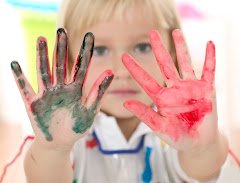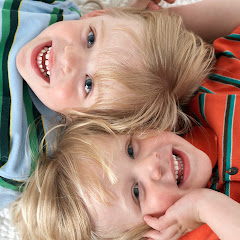Two new books, No One But You by Douglas Wood and illustrated by P.J. Lynch and What's Special About Me, Mama? by Kristina Evans and illustrated by Javaka Steptoe are beautiful books which help children understand their own uniqueness.
Just as the child in What's Special About Me, Mama? I remember wondering what people meant when they said someone was special. The mother in the story first replies to the child's question, that it is the child's eyes, but the child notes his eyes are just like her eyes. The story goes on this way until the mother tells the child that he is loved more than anybody in the whole wild world by her.
No One But You starts by encouraging children to experience life for themselves, stating that some of the best things cannot be taught, but must discovered. It is almost impossible to convey how the ocean feels and sounds without the experience of walking along the shore. As you continue to read, you begin see that the the book also celebrates and identifies each person's "specialness" in the distinctiveness of our experiences. Just as no one else is reading this blog, at this exact moment, in the same place with the same past experiences, no child experiences events in quite the same way. I will never forget the experience of standing beside the huge redwood trees in California and the sense of awe which overcame me. While many others may have experienced a similar feeling, our experiences are slightly different, because of who we are and where we have been. This is a main message that comes through in this beautifully illustrated picture book.
I truly think this is the best children's book I have ever read, that helps children understand what makes each person so unique and special. While many of the pictures are of younger children, this book is appropriate for children from older 3s through 12.
Just as the child in What's Special About Me, Mama? I remember wondering what people meant when they said someone was special. The mother in the story first replies to the child's question, that it is the child's eyes, but the child notes his eyes are just like her eyes. The story goes on this way until the mother tells the child that he is loved more than anybody in the whole wild world by her.
No One But You starts by encouraging children to experience life for themselves, stating that some of the best things cannot be taught, but must discovered. It is almost impossible to convey how the ocean feels and sounds without the experience of walking along the shore. As you continue to read, you begin see that the the book also celebrates and identifies each person's "specialness" in the distinctiveness of our experiences. Just as no one else is reading this blog, at this exact moment, in the same place with the same past experiences, no child experiences events in quite the same way. I will never forget the experience of standing beside the huge redwood trees in California and the sense of awe which overcame me. While many others may have experienced a similar feeling, our experiences are slightly different, because of who we are and where we have been. This is a main message that comes through in this beautifully illustrated picture book.
I truly think this is the best children's book I have ever read, that helps children understand what makes each person so unique and special. While many of the pictures are of younger children, this book is appropriate for children from older 3s through 12.
After reading this book, children might want to draw or talk about some of their memories. It would be a good introduction for encouraging self reflection or starting a diary. Children may want to focus, as the book does, on the discoveries made in nature, but they could also decide to write about the people they meet each day and reflect on those influences.
Younger children can make discovery journals simply by drawing a picture of something they discovered that day. This would be a great start to help them build a habit of appreciating the small everyday, wonders in the world. In our fast paced, technology world, even small children need reminders to stop and smell the roses.


